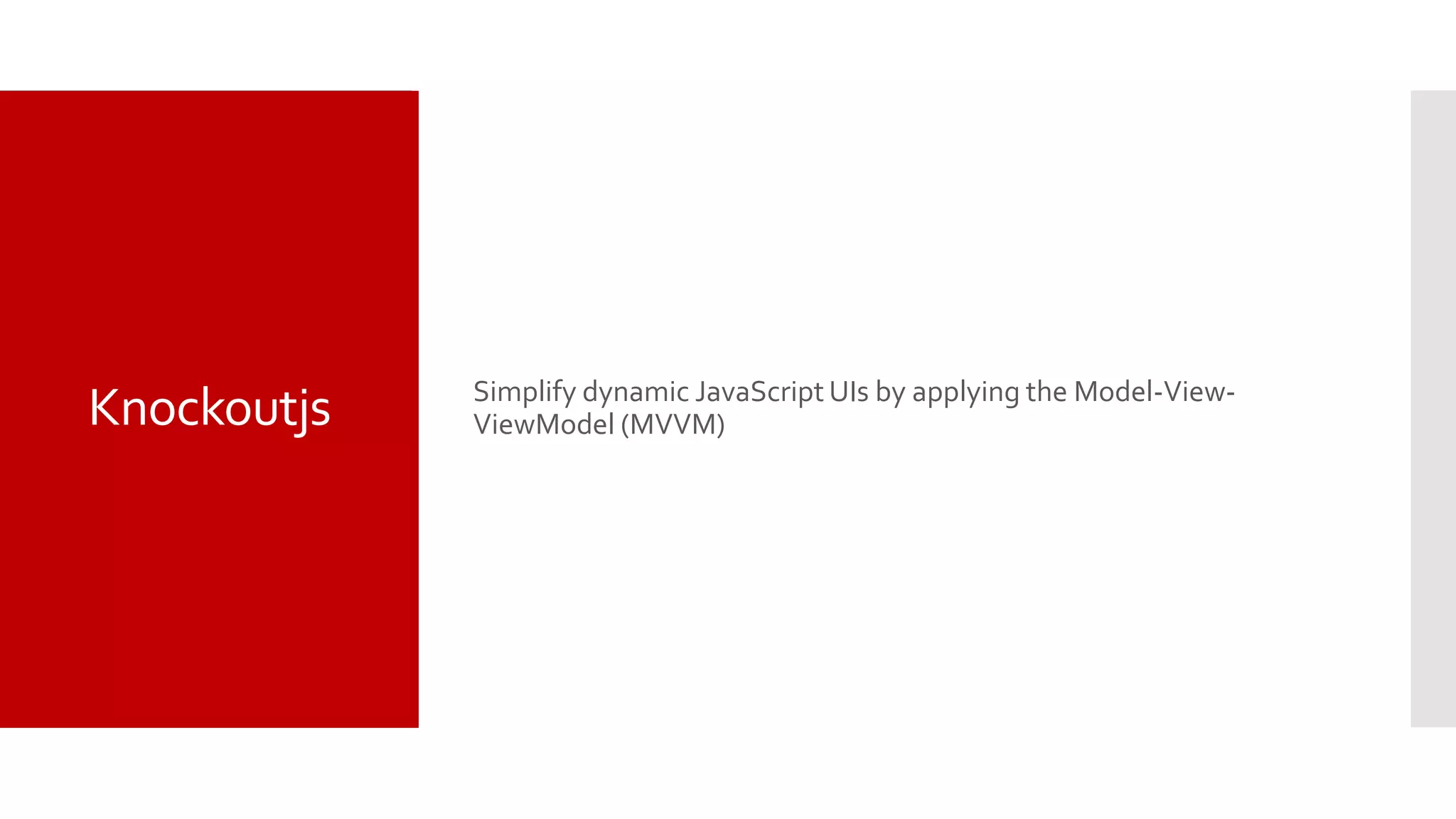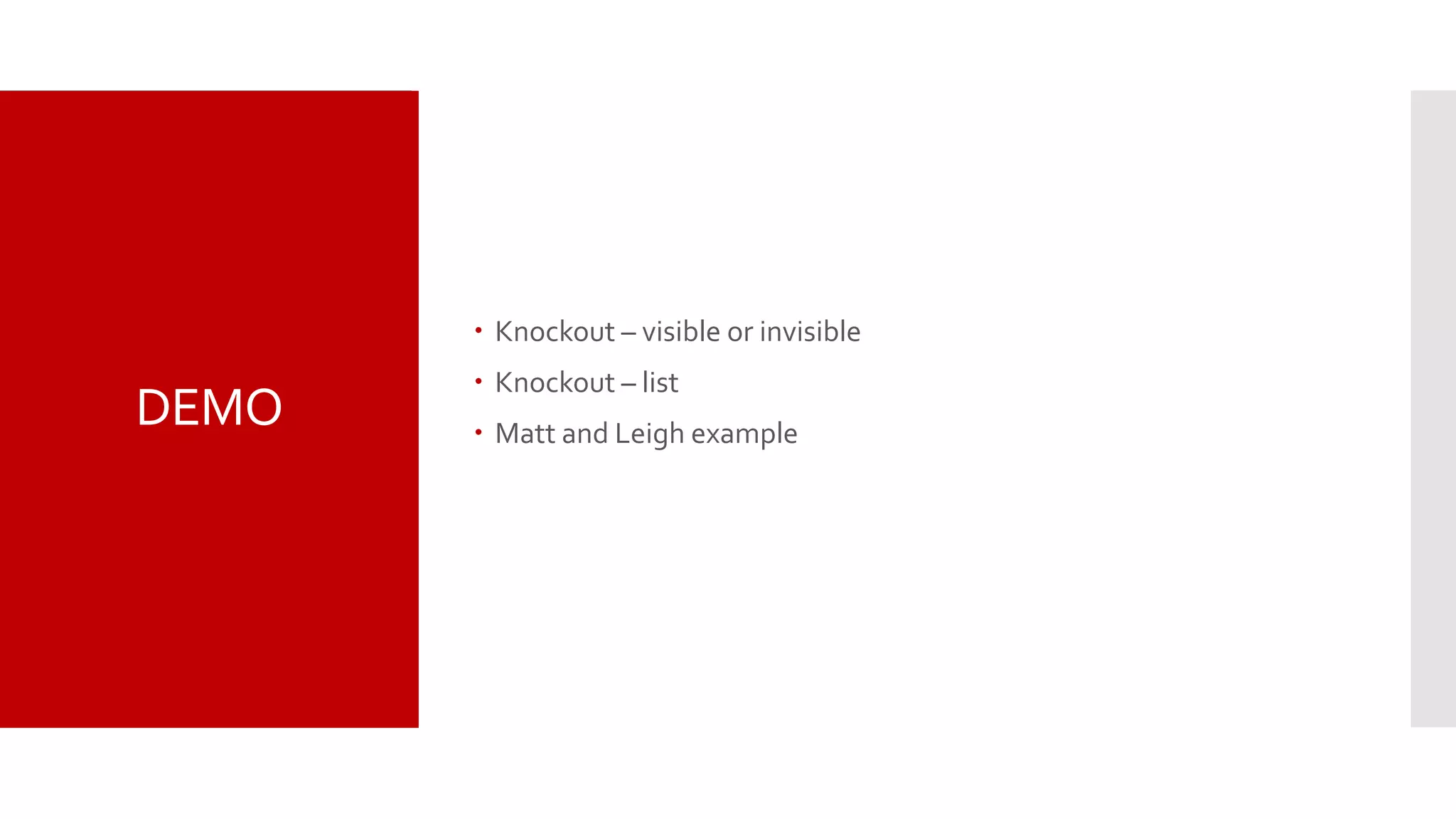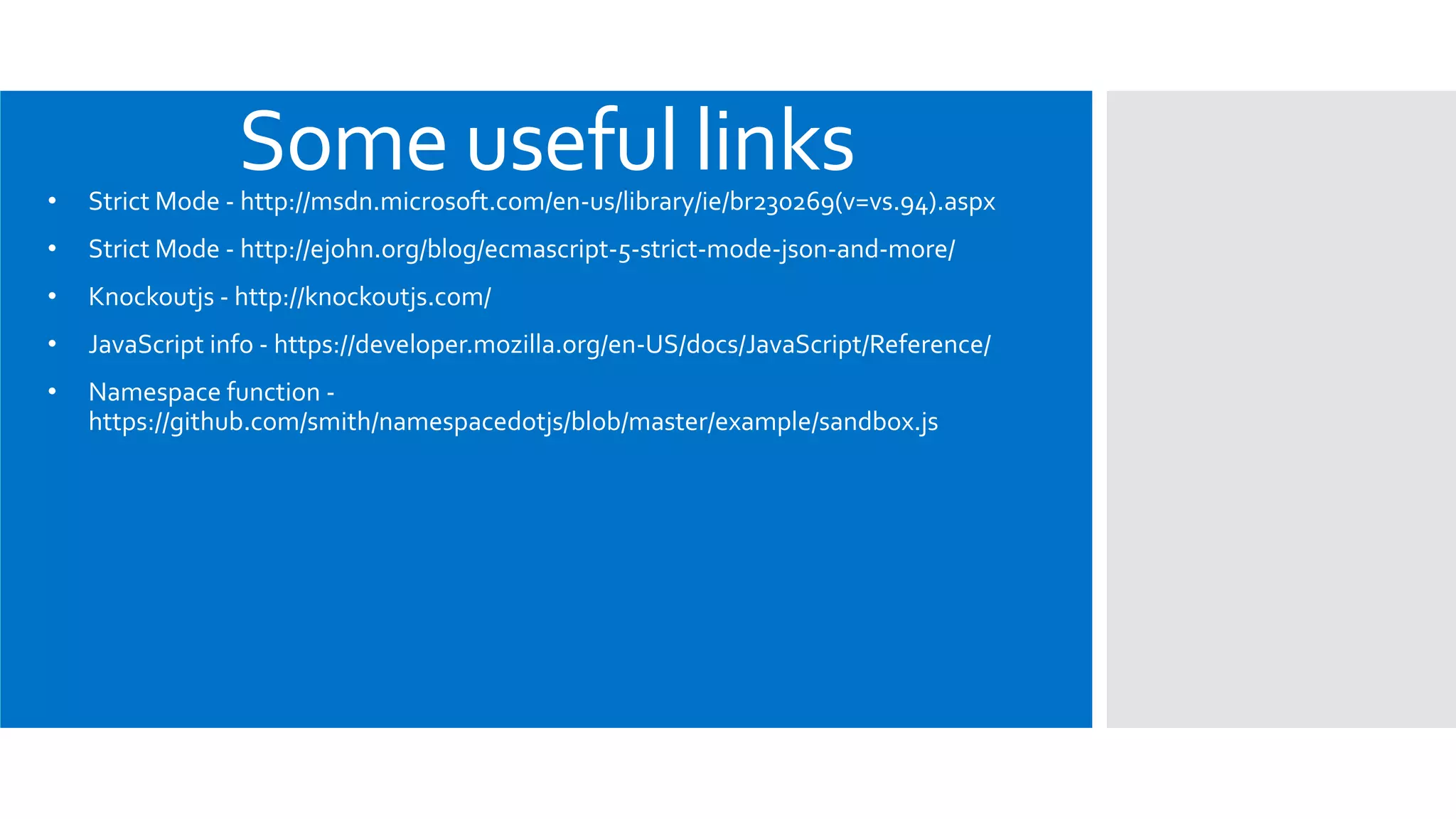JavaScript is an object-based scripting language. It uses variables declared with var, and objects are collections of name-value pairs. JavaScript is case sensitive and always uses semicolons. Strict mode restricts actions and prevents errors. Key concepts include null, undefined, equality operators, namespaces, classes, functions, closures, and patterns like MVVM and Knockout.js for dynamic UIs.
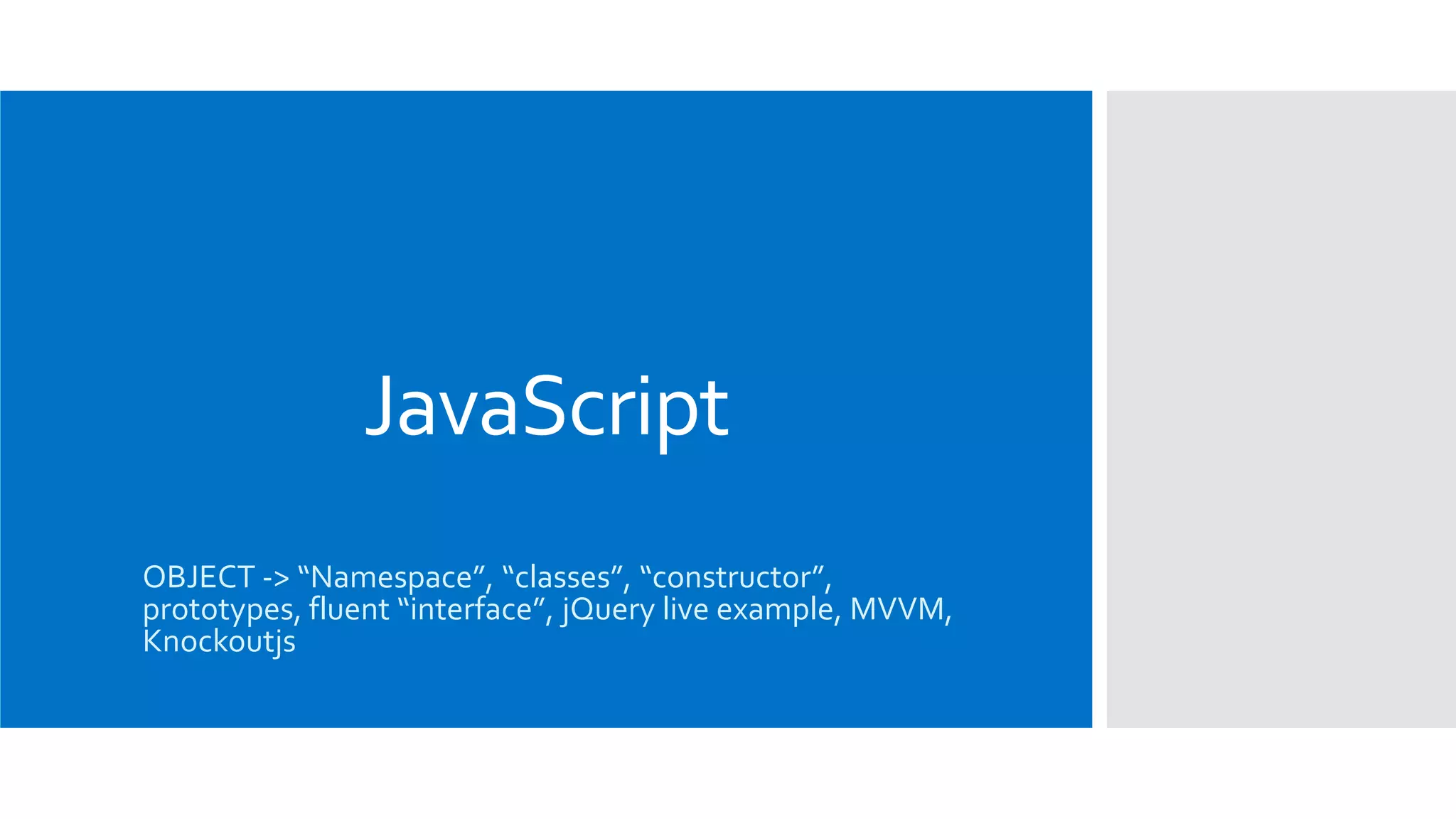
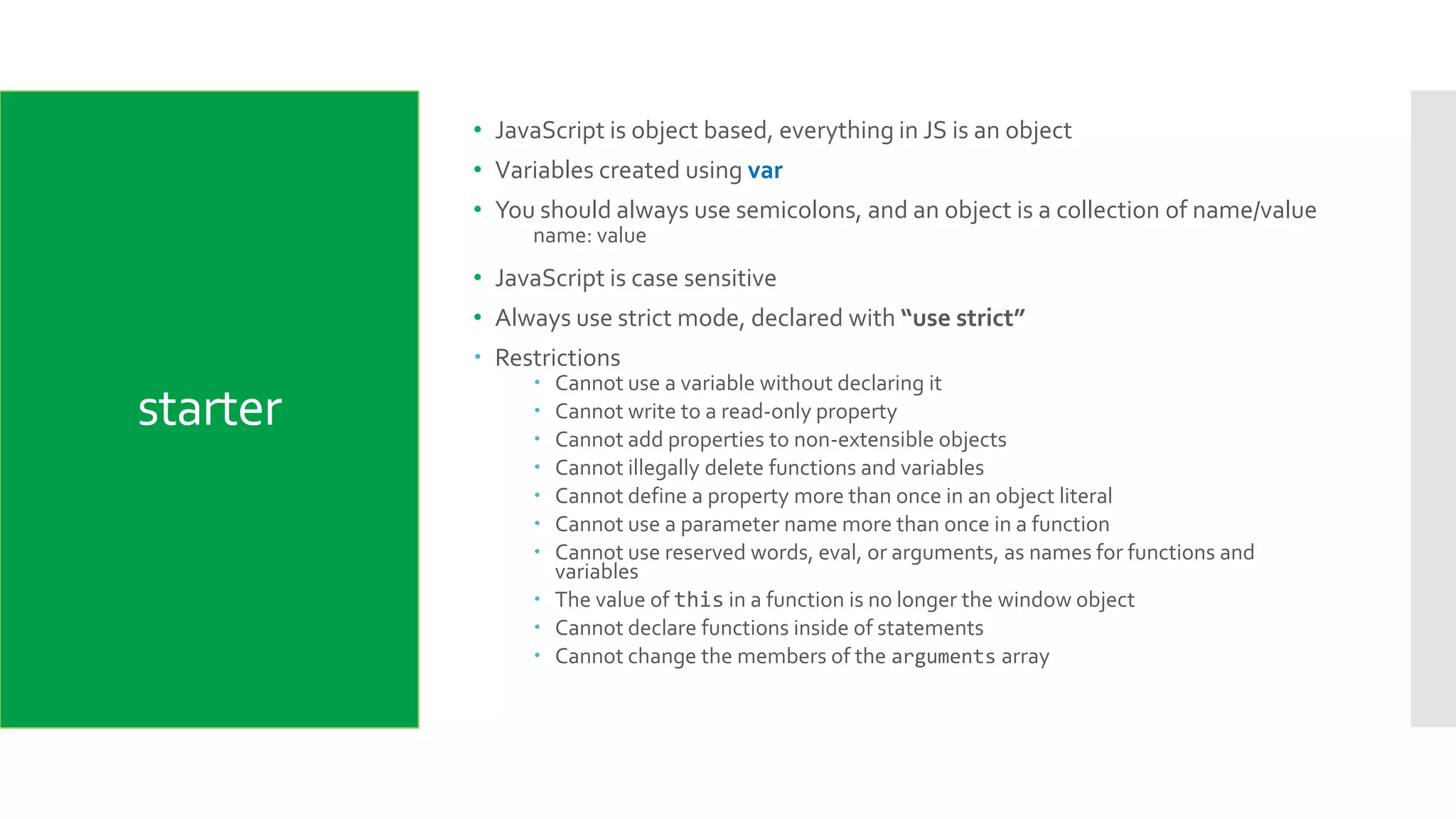
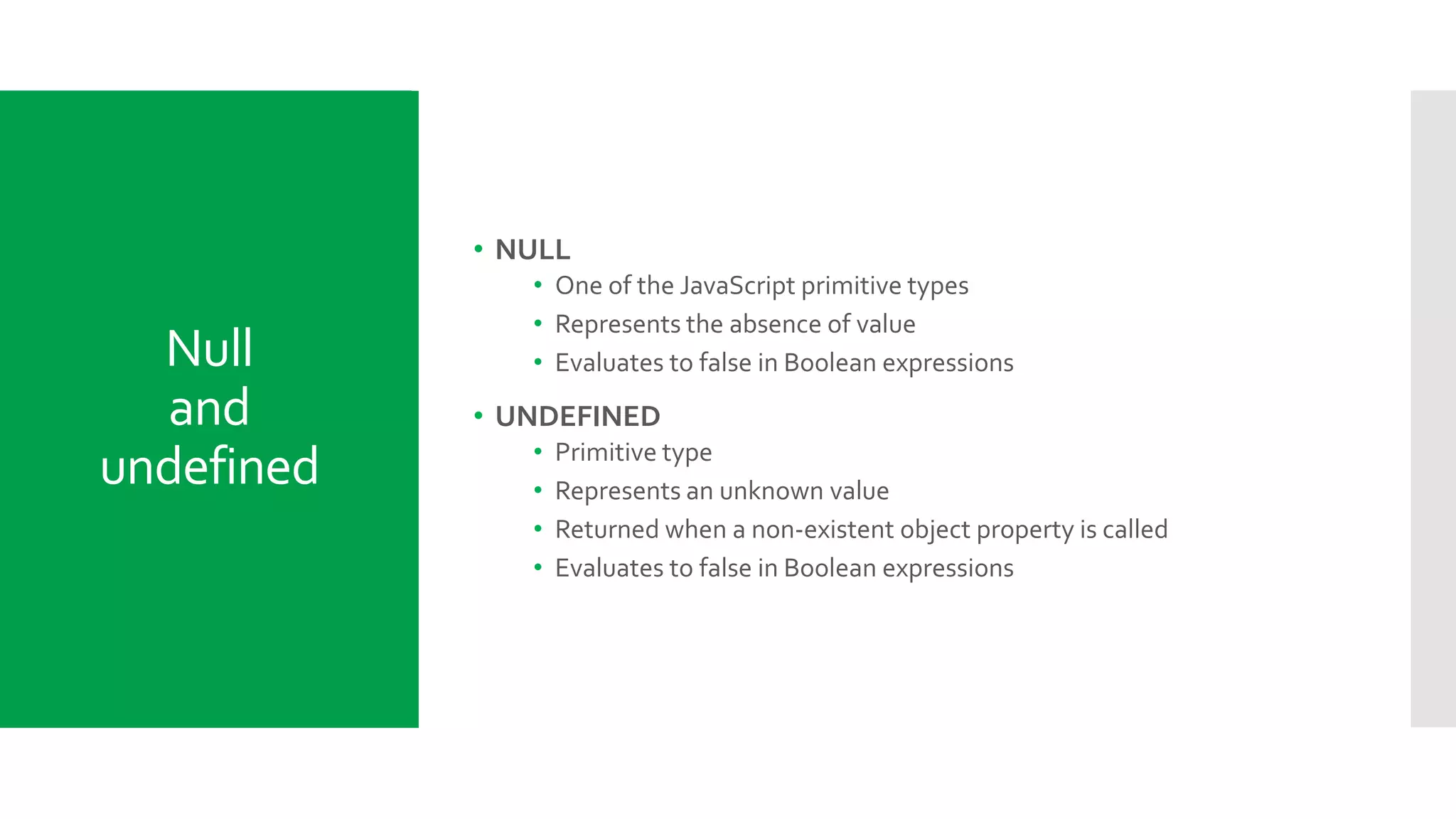
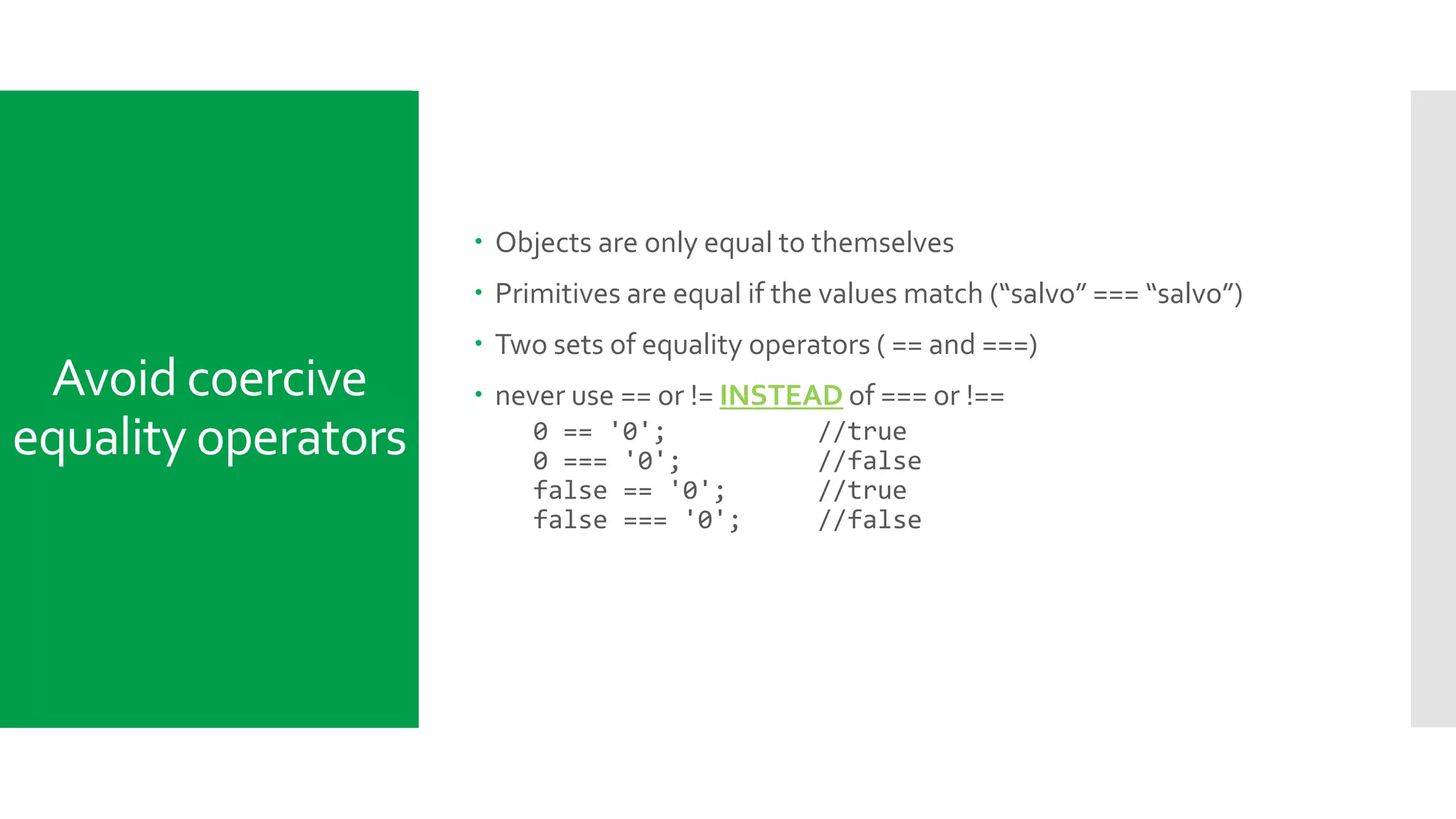
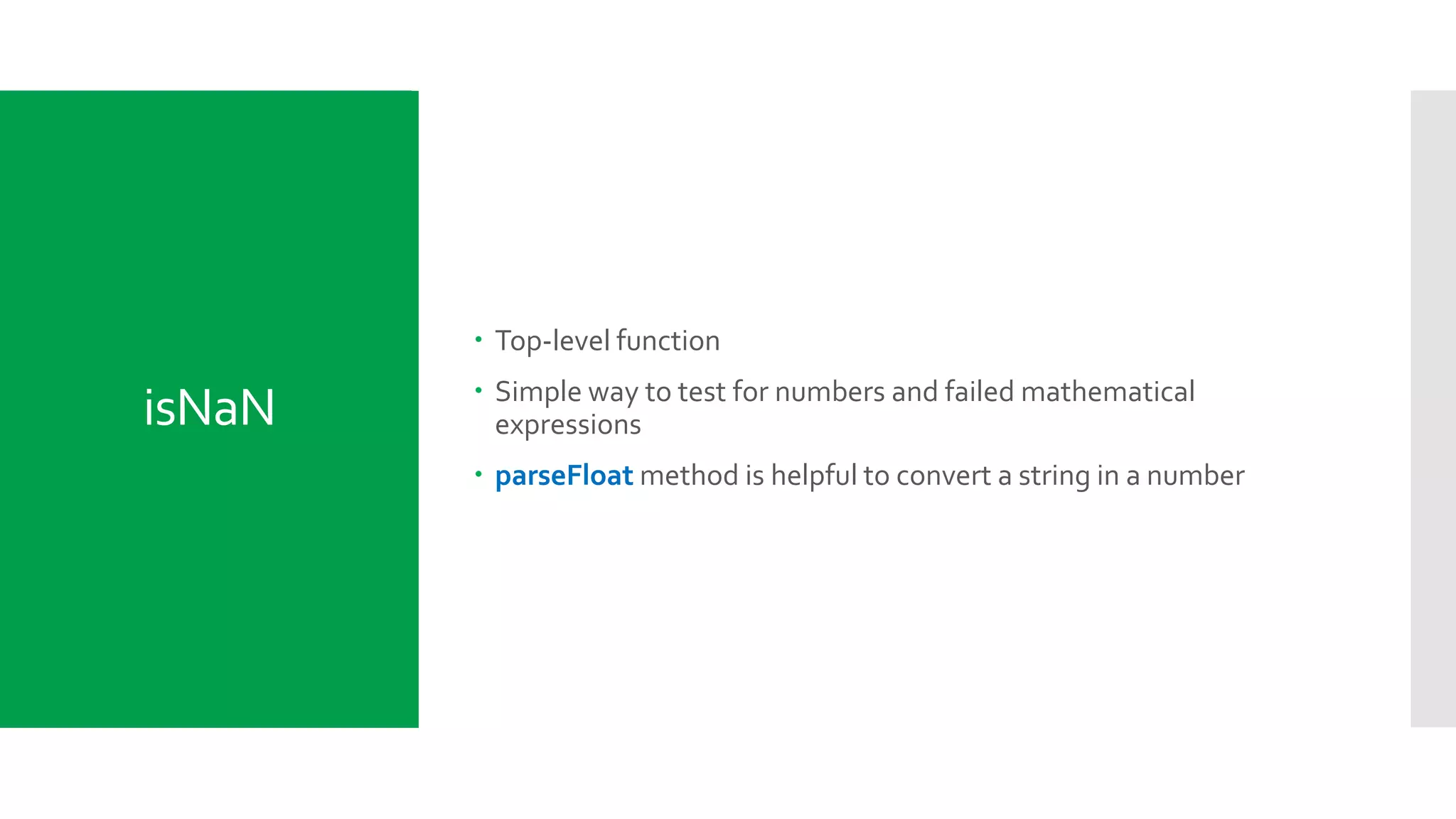
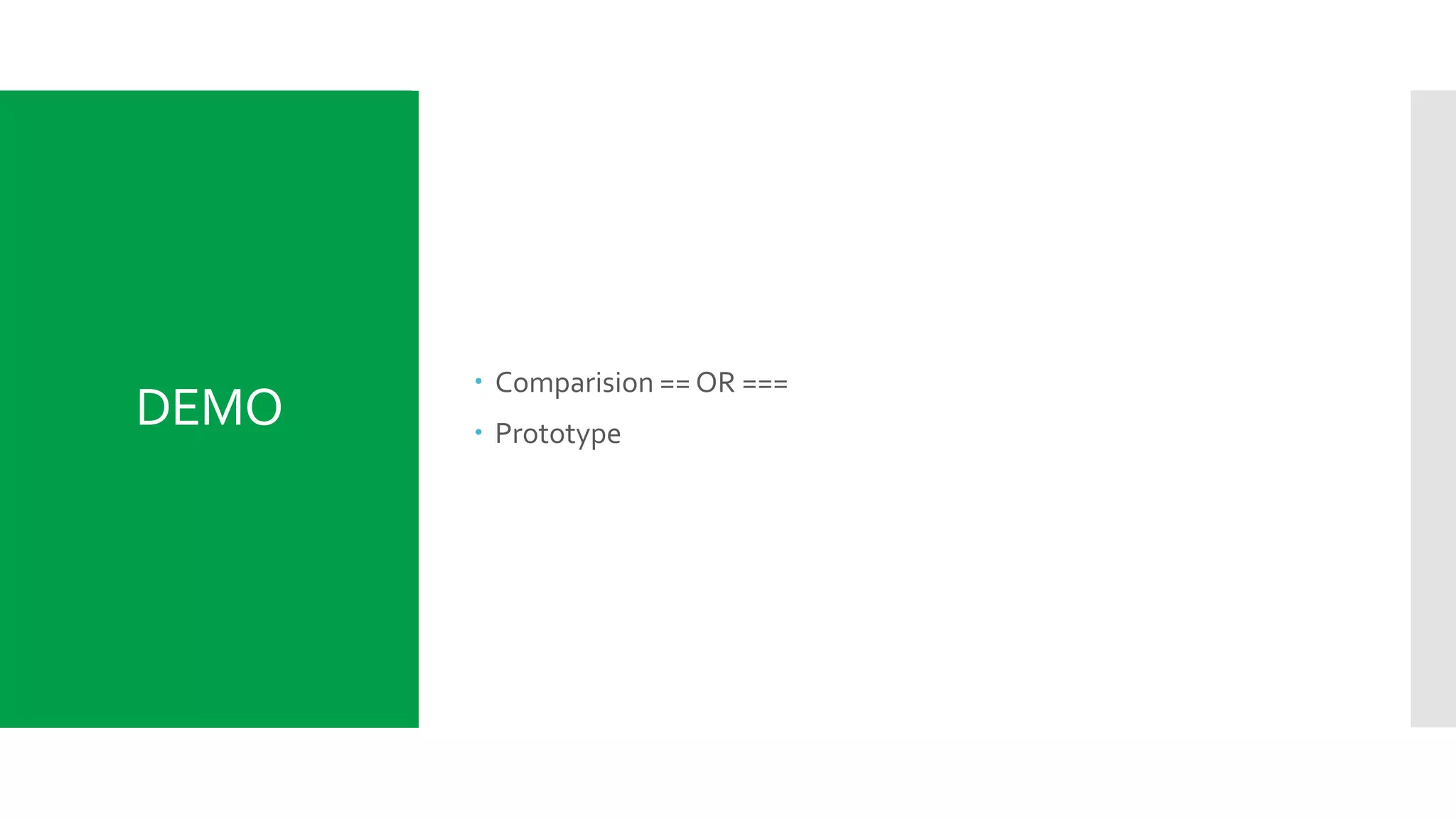
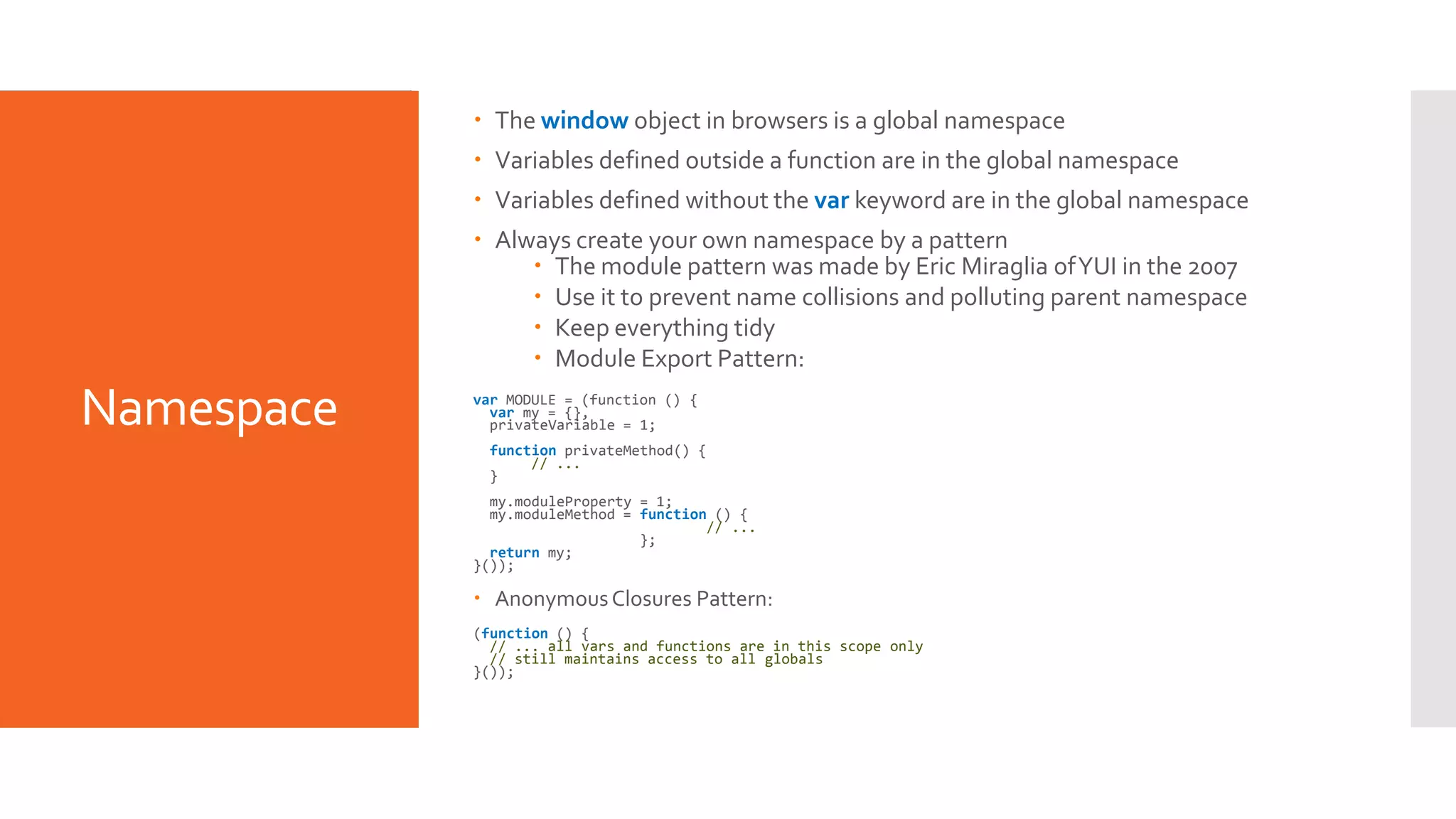
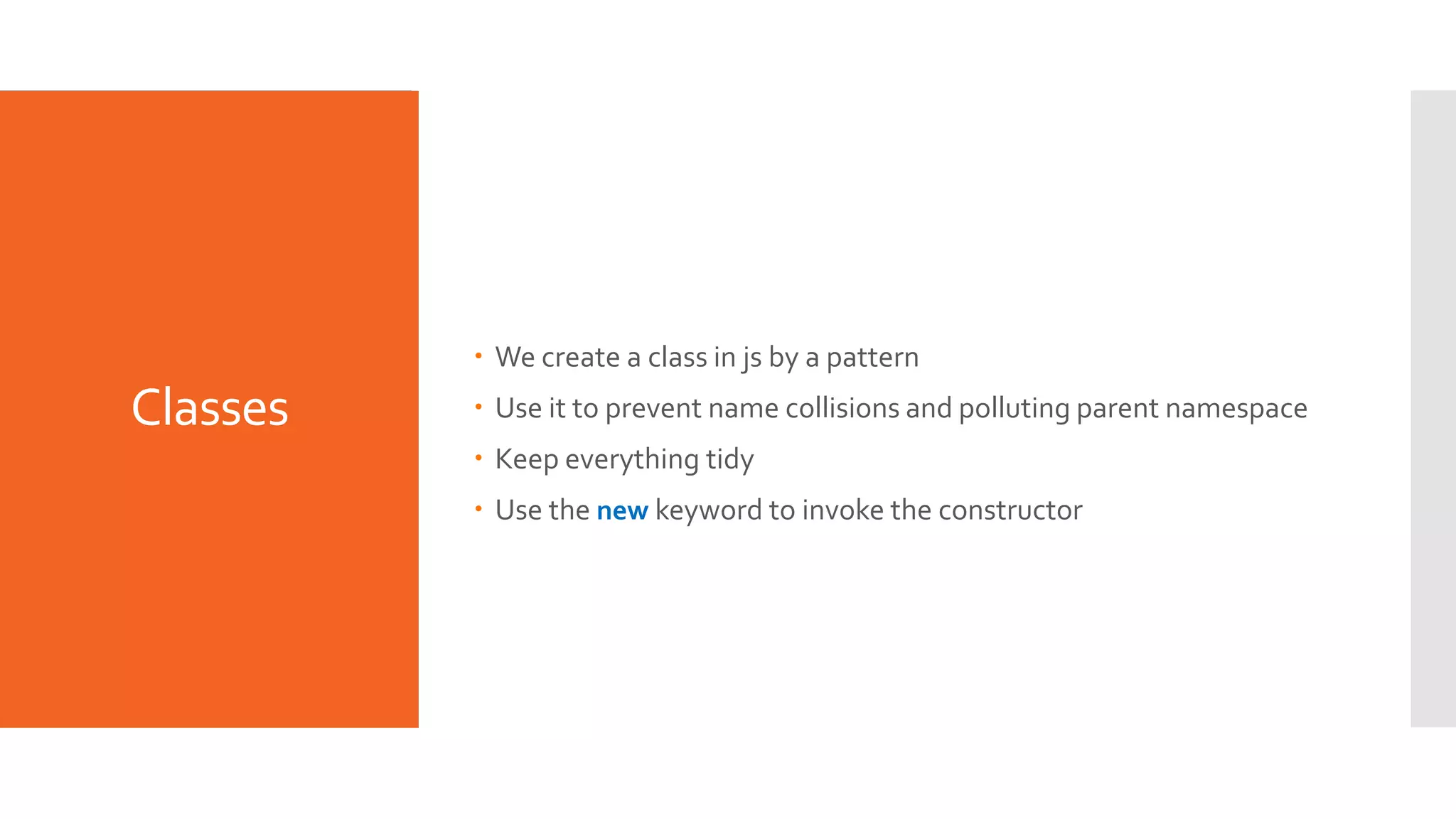
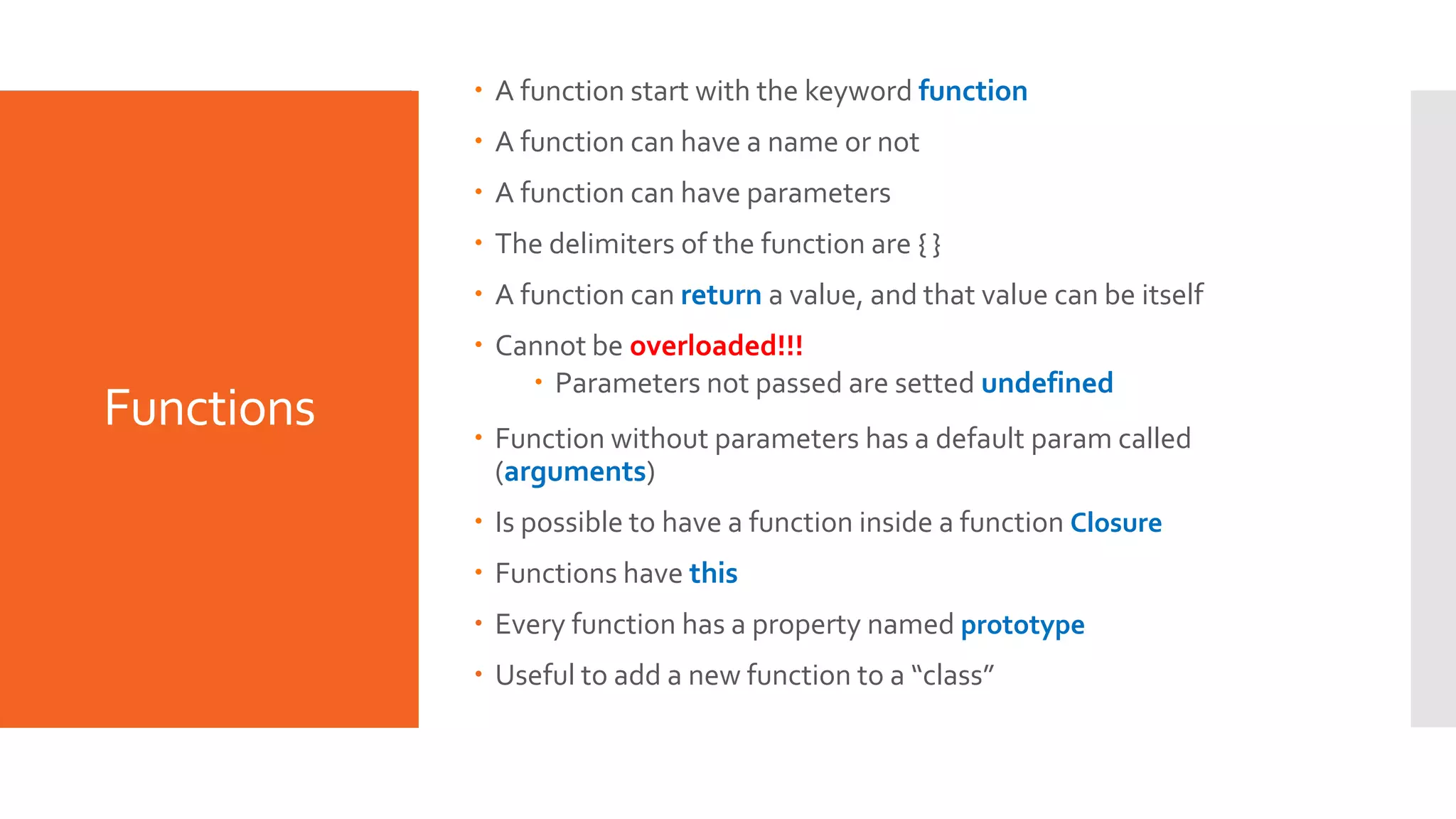
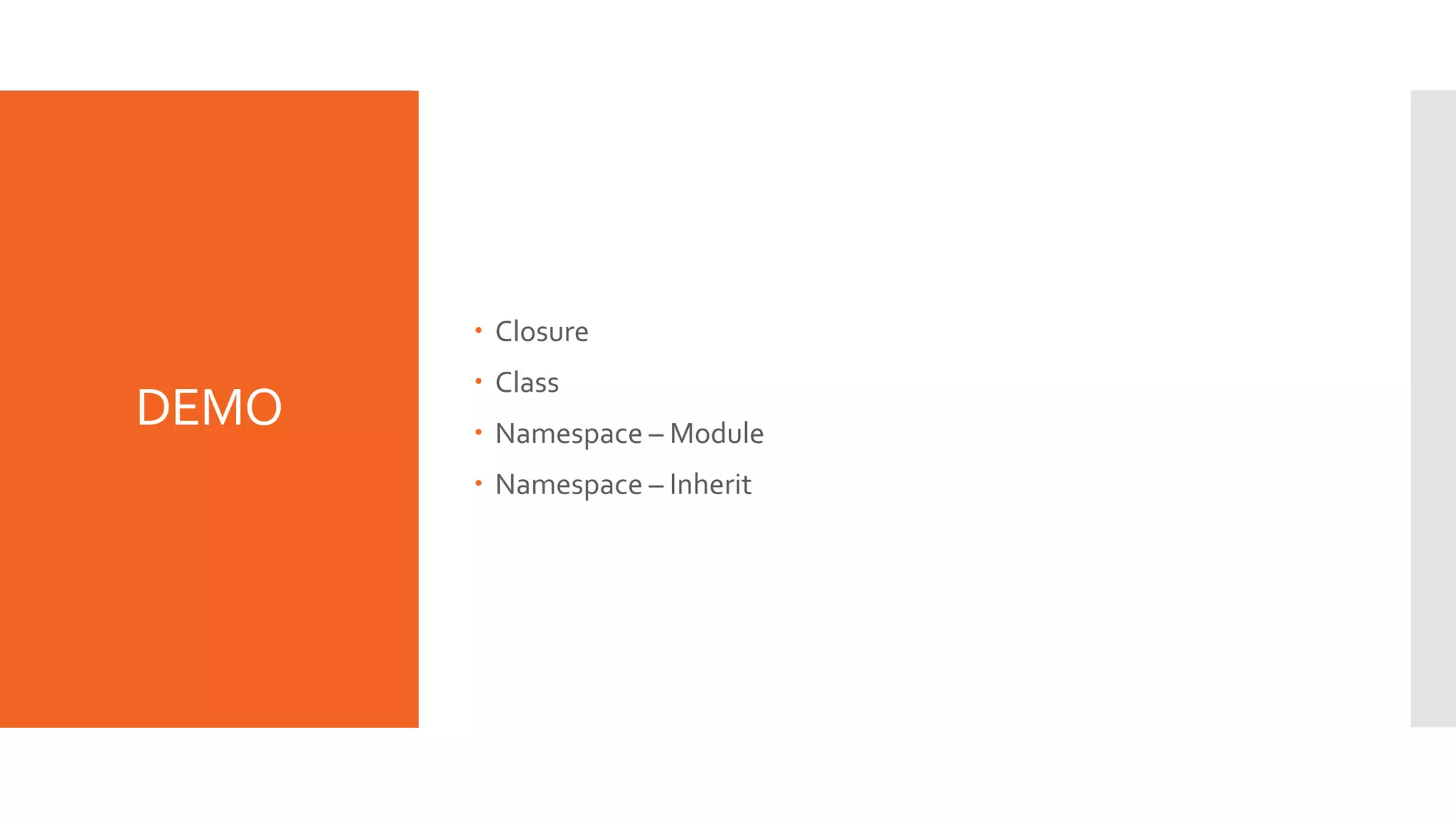
![ http://en.wikipedia.org/wiki/Model_View_ViewModel
The Model View ViewModel (MVVM) is an architectural
pattern used in software engineering that originated
from Microsoft as a specialization of the presentation model
design pattern introduced by Martin Fowler.[1] Largely based on
the model–view–controller pattern (MVC), MVVM is targeted at
modern UI development platforms which support Event-driven
MVVM Pattern programming, such as HTML5,[2][3] Windows Presentation
Foundation(WPF), Silverlight and the ZK framework.
MVVM facilitates a clear separation of the development of
the graphical user interface (either as markup language or GUI
code) from the development of the business logic or back
end logic known as the model (also known as the data model to
distinguish it from the view model).](https://image.slidesharecdn.com/javascriptfundamentalsandnot-130205093936-phpapp01/75/Javascript-fundamentals-and-not-11-2048.jpg)
